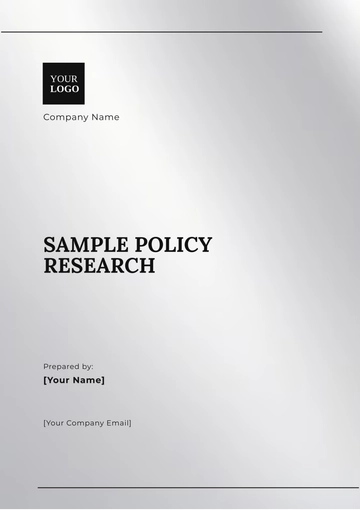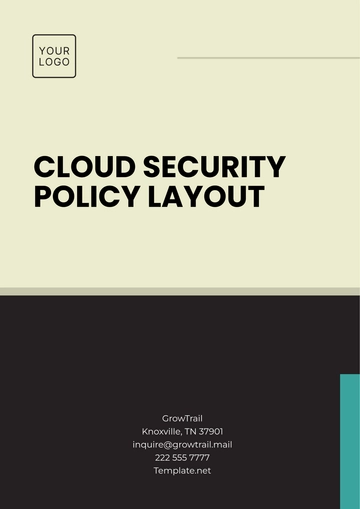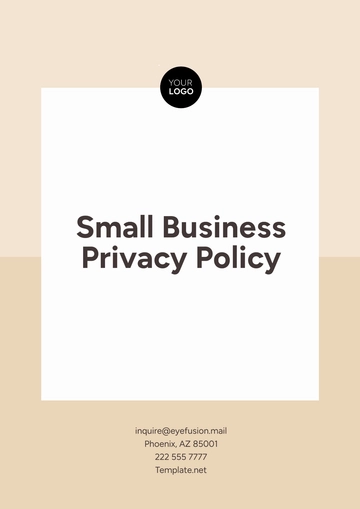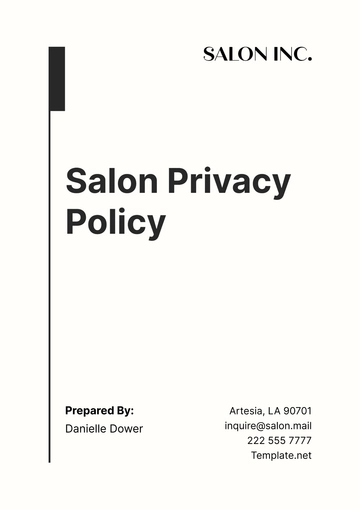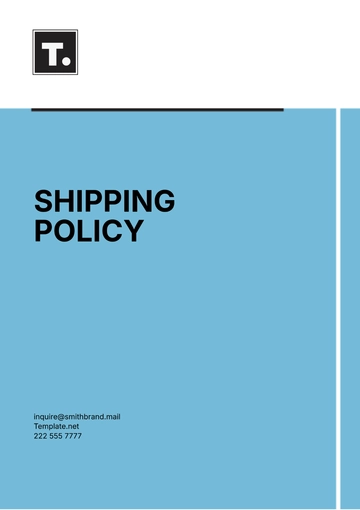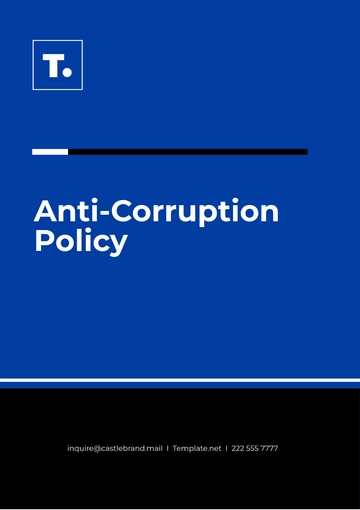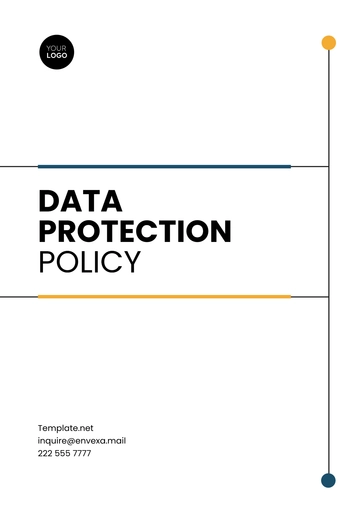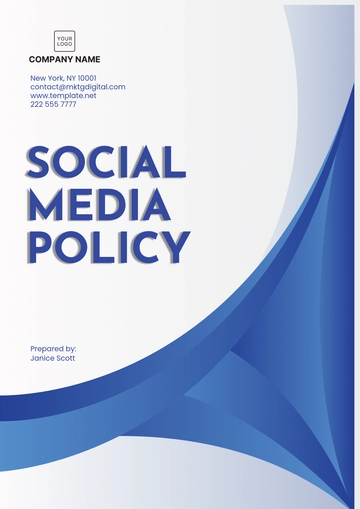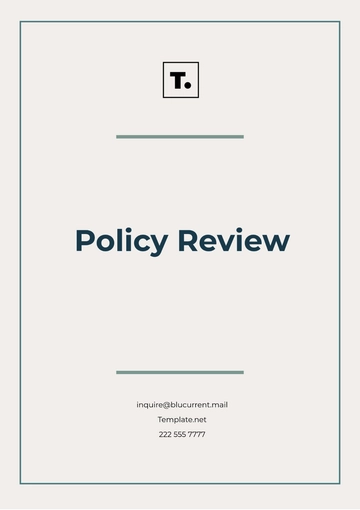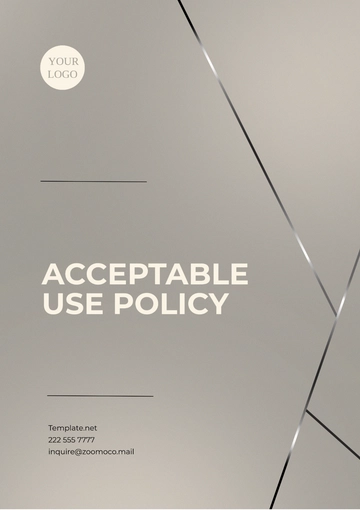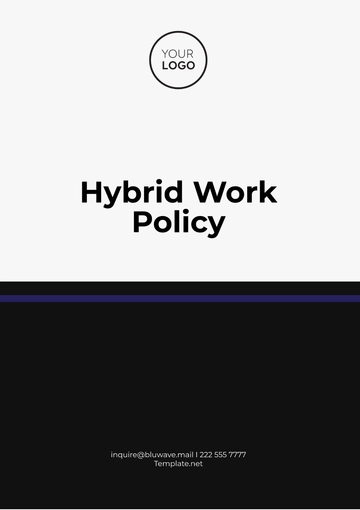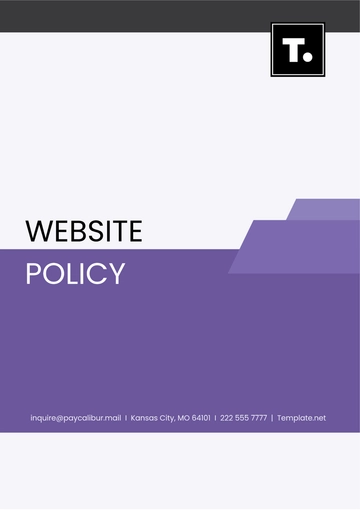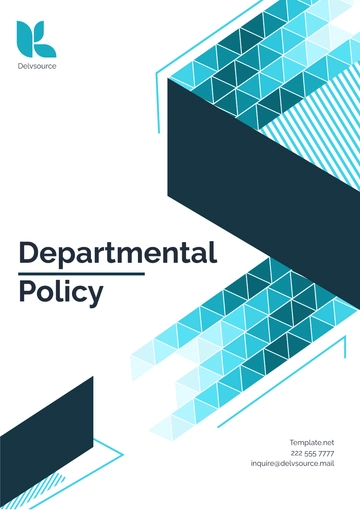Free Salon Maintenance Policy
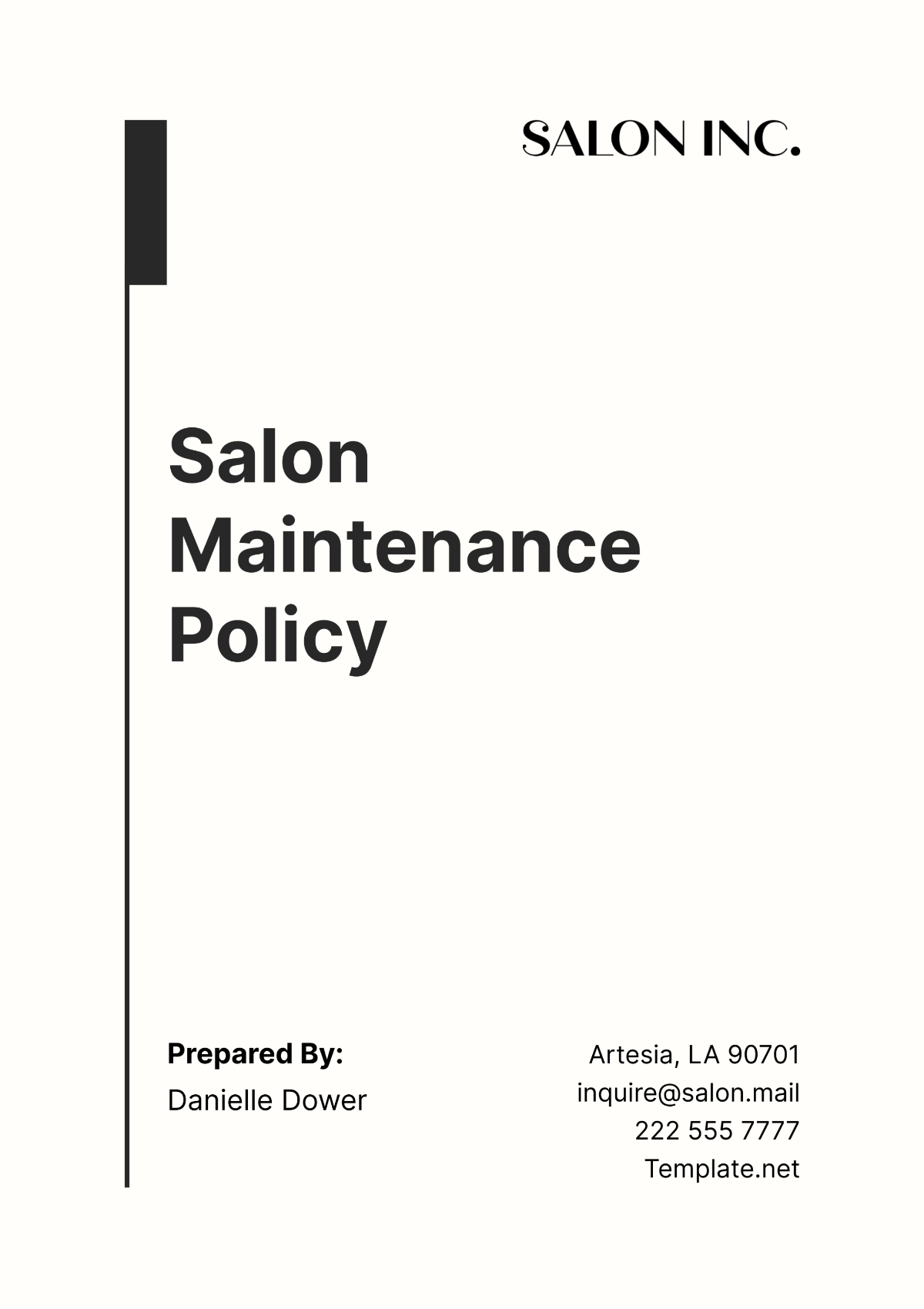
1. Introduction
Purpose of the Policy
The purpose of this Maintenance Policy is to establish consistent and effective procedures to ensure the cleanliness, safety, and operational efficiency of [Your Company Name]. Maintaining our salon to the highest standards is crucial to providing an environment that is welcoming, professional, and conducive to optimal service delivery. This policy outlines the responsibilities and scheduled tasks required to maintain our premises, ensuring they meet both our high standards and regulatory requirements.
Importance of Maintenance
Effective maintenance impacts every aspect of our operations. It ensures that:
The equipment functions reliably and safely.
The salon environment remains hygienic and aesthetically pleasing.
The likelihood of accidents or health issues due to poor upkeep is minimized.
Compliance with health and safety regulations is maintained, protecting both staff and clients from potential harm.
2. Scope
This policy applies to all physical areas of [Your Company Name]'s operations, including but not limited to the salon floor, workstations, restrooms, and storage areas. It covers the responsibilities of all salon personnel, including management, hairstylists, cleaning staff, and other support staff, ensuring everyone is aware of and committed to their role in maintaining our standards.
Areas Covered
Salon Floor: Includes all client service areas and workstations.
Workstations: Individual areas where hair and beauty services are provided.
Restrooms: Client and staff restrooms.
Storage Areas: Includes all areas used for the storage of supplies and equipment.
Personnel Responsibilities:
Management: Oversees implementation of the policy, schedules maintenance checks, and ensures compliance.
Hairstylists/Beauticians: Responsible for daily workstation maintenance and reporting equipment issues.
Cleaning Staff: Executes daily, weekly, and monthly cleaning tasks as outlined in this policy.
Support Staff: Assists with inventory checks and other maintenance-related tasks as required.
3. Daily Maintenance Tasks
Daily maintenance tasks are essential to ensure the salon presents a clean, organized, and welcoming environment at all times. These tasks include, but are not limited to:
Table: Daily Maintenance Tasks
Task | Area | Responsible Personnel | Frequency |
|---|---|---|---|
Sweep and mop floors | Salon floor | Cleaning Staff | Daily |
Disinfect all tools and equipment | Workstations | Hairstylists/Beauticians | After each use |
Restock consumables (e.g., towels, capes) | Workstations | Support Staff | As needed |
Wipe down surfaces (counters, chairs) | Salon floor and workstations | Cleaning Staff | Daily |
Check and organize products and tools | Workstations | Hairstylists/Beauticians | Daily |
Additional Responsibilities:
Ensure waste bins are emptied and relined daily.
Replace or repair any broken or worn-out items as noticed.
4. Weekly Maintenance Tasks
Weekly tasks are designed to address areas that require deeper cleaning or less frequent upkeep, providing a thorough enhancement of our salon's cleanliness and function.
Table: Weekly Maintenance Tasks
Task | Area | Responsible Personnel | Frequency |
|---|---|---|---|
Deep clean of all flooring | Salon floor | Cleaning Staff | Weekly |
Detailed cleaning of restrooms | Restrooms | Cleaning Staff | Weekly |
Inspection and cleaning of HVAC systems | Entire salon | Maintenance Contractor | Monthly |
Inventory check for product replenishments | Storage Areas | Support Staff | Weekly |
Additional Responsibilities:
Shampoo salon chairs and washable furnishings.
Conduct a thorough inspection of all salon tools for signs of wear and arrange repairs or replacements as needed.
5. Monthly Maintenance Tasks
Monthly tasks focus on the long-term upkeep of the salon’s infrastructure and critical equipment.
Table: Monthly Maintenance Tasks
Task | Area | Responsible Personnel | Frequency |
|---|---|---|---|
Equipment maintenance (e.g., dryers, wash basins) | Salon floor | Maintenance Contractor | Monthly |
Pest control inspection | Entire salon | Pest Control Contractor | Monthly |
Safety equipment checks (e.g., fire extinguishers, emergency exits) | Entire salon | Safety Officer | Monthly |
Deep clean of storage areas, check for expired products | Storage Areas | Cleaning Staff | Monthly |
Additional Responsibilities:
Review and update safety protocols and emergency procedures.
Ensure compliance with all health and safety regulations through regular audits and updates of safety documentation.
6. Maintenance of Tools and Equipment
Maintaining our tools and equipment in optimal working condition is crucial for the efficiency of service delivery and the safety of both staff and clients. Proper care also extends the lifespan of these assets, reducing the cost and frequency of replacements.
Table: Maintenance Schedule for Tools and Equipment
Equipment | Maintenance Task | Frequency | Responsible Personnel |
|---|---|---|---|
Hair Clippers | Clean and oil blades | Daily | Hairstylists |
Hair Dryers | Clean filters | Weekly | Support Staff |
Styling Tools (irons, curlers) | Check for electrical safety; clean surfaces | Monthly | Hairstylists |
Shampoo Stations | Check hoses and nozzles for leaks; clean basins | Weekly | Support Staff |
Chairs and Stools | Lubricate moving parts; check for stability | Monthly | Maintenance Team |
Proper Storage of Tools
Tools should be stored in a clean, dry place to prevent damage and deterioration.
Electrical tools should be unplugged, coiled safely, and stored away from high-traffic areas to prevent accidents.
Routine Checks
Daily visual inspections should be conducted by staff using the tools to identify any signs of wear or damage. Any issues should be reported to the management immediately.
A professional technician should conduct detailed inspections semi-annually to ensure all equipment meets safety standards.
Handling and Reporting Malfunctioning Equipment
A logbook must be maintained at each workstation where employees can report any malfunction or irregularity with their tools or equipment.
Reported issues should be addressed within 24 hours, with either a repair or replacement, depending on the severity of the malfunction.
7. Health and Safety Compliance
Ensuring that we follow health and safety regulations is not merely a matter of fulfilling legal obligations; it is also an indispensable part of maintaining the integrity of our operations and sustaining the trust that the public places in us.
Regulatory Compliance
[Your Company Name] shall comply with all local, state, and federal health and safety regulations applicable to salon operations.
Updates to regulations will be monitored by the Compliance Officer, and necessary adjustments to procedures will be implemented promptly.
Training for Staff
All employees will receive initial training on health and safety protocols during their onboarding process.
Refresher training sessions will be conducted annually, or whenever changes to health and safety guidelines occur.
Documentation and Record Keeping
Maintenance logs and safety inspection records will be kept for a minimum of five years.
Incident reports related to health and safety issues must be filed and reviewed by management to prevent future occurrences.
Table: Key Health and Safety Compliance Checks
Compliance Area | Check Performed | Frequency | Documentation Required |
|---|---|---|---|
Fire Safety | Check fire extinguishers and alarms | Monthly | Safety Inspection Log |
Chemical Storage | Inspect storage for leaks and proper labeling | Monthly | Chemical Storage Log |
Equipment Safety | Inspect all electrical equipment | Quarterly | Equipment Safety Report |
8. Reporting and Addressing Issues
Procedures for Reporting Maintenance Issues
Immediate issues must be reported to the salon manager directly.
Non-urgent issues should be recorded in the Maintenance Issue Log available at each workstation.
Timeline for Addressing Issues
Critical issues affecting safety or operations must be addressed within 24 hours.
Non-critical issues should be resolved within one week.
Escalation Procedures
If issues are not resolved within the stipulated time, they should be escalated to the next level of management.
Regular meetings will be held to discuss unresolved issues and their implications on service delivery.
9. Training and Responsibilities
Responsibilities Assigned
To ensure the highest standards of maintenance are upheld, specific responsibilities are assigned based on job roles:
Salon Managers: Oversee the implementation of the maintenance schedule, train staff on maintenance procedures, and ensure compliance with health and safety regulations.
Hairstylists and Beauticians: Responsible for the daily cleaning and maintenance of their individual workstations, tools, and equipment. They must also report any equipment malfunctions or safety issues immediately.
Cleaning Staff: Conduct general and deep cleaning tasks according to the schedule, manage waste disposal, and maintain cleanliness throughout the salon.
Maintenance Team: Handles technical and mechanical maintenance and repairs, including but not limited to electrical appliances, plumbing, and structural issues.
Training Programs
Effective training is crucial for maintaining our high standards. Our comprehensive training program includes:
Initial Maintenance Training: All new employees undergo an intensive training session that covers all aspects of salon maintenance, including daily, weekly, and monthly tasks, tool and equipment care, and safety protocols.
Ongoing Maintenance Training: Regular training sessions are held to update staff on new maintenance procedures and technologies, changes in health and safety regulations, and environmentally sustainable practices.
Continuing Education
Professional Development: Employees are encouraged to attend external seminars and workshops related to salon maintenance and safety. [Your Company Name] offers a tuition reimbursement program for courses that can demonstrably improve salon operations.
Certifications: Staff are supported in obtaining certifications in specialized areas such as hazardous material handling, emergency preparedness, and equipment safety.
Skill Enhancement Sessions: Quarterly workshops conducted by industry experts to ensure our team is proficient with the latest salon maintenance technologies and techniques.
Recognition and Accountability
Monthly Maintenance Excellence Award: To motivate staff, we recognize individuals who demonstrate exceptional diligence in maintenance tasks.
Accountability Measures: Performance reviews include an evaluation of how well each staff member adheres to maintenance protocols. Non-compliance may result in disciplinary actions or additional training.
10. Policy Review and Updates
Regular Review Schedule
Annual Review: The Salon Maintenance Policy is reviewed annually to ensure it remains effective and relevant. The review process includes an assessment of the current policy's success and areas where it could be improved.
Quarterly Feedback Sessions: Every quarter, staff are invited to provide feedback on the maintenance policy. These sessions help identify real-time issues and innovative solutions from those directly involved in day-to-day operations.
Process for Policy Updates
Proposing Changes: Any staff member can propose changes to the maintenance policy. Proposals must be submitted in writing to management, outlining the reasons for the change and the expected benefits.
Review and Approval: Proposed changes are reviewed by management and, if necessary, by legal and compliance teams to ensure they align with regulatory requirements. Approved changes are then incorporated into the policy.
Documentation: All updates are documented in a change log within the Maintenance Policy Manual. This log includes details of the change, the person who proposed it, and the date it was implemented.
Communication of Policy Changes
Internal Communication: Changes to the policy are communicated through email, staff meetings, and posted notices in common areas.
Training Sessions: Following significant updates, additional training sessions are held to ensure all employees understand the new policies and how they affect their roles.
Accessibility: The updated Maintenance Policy Manual is made accessible both in print at the salon and digitally on the company intranet. This ensures that all staff members can access the information at any time.
Feedback Implementation
Implementation Strategy: Feedback from staff is taken seriously, with a structured approach to integrating it into policy updates.
Continuous Improvement: By continuously refining our Maintenance Policy, we maintain our commitment to excellence and ensure that our salon operates at peak efficiency and safety.
- 100% Customizable, free editor
- Access 1 Million+ Templates, photo’s & graphics
- Download or share as a template
- Click and replace photos, graphics, text, backgrounds
- Resize, crop, AI write & more
- Access advanced editor
Keep your salon in prime condition with Template.net's Salon Maintenance Policy Template. Edit and customize using the Ai Editor Tool to specify maintenance routines and standards. This template ensures your facility and equipment are maintained at peak efficiency, safeguarding your investment and providing clients with a reliable, professional service experience.
You may also like
- HR Policy
- Restaurant Policy
- Company Policy
- Accounting Policies and Procedures
- Website Policy
- Privacy Policy
- Safety Policy
- School Policy
- IT and Software Policy
- Law Firm Policy
- Construction Policy
- Interior Design Policy
- Travel Agency Policy
- Education Academic Policy
- Security Policy
- Real Estate Policy
- Expense Policy
- Software Policy
